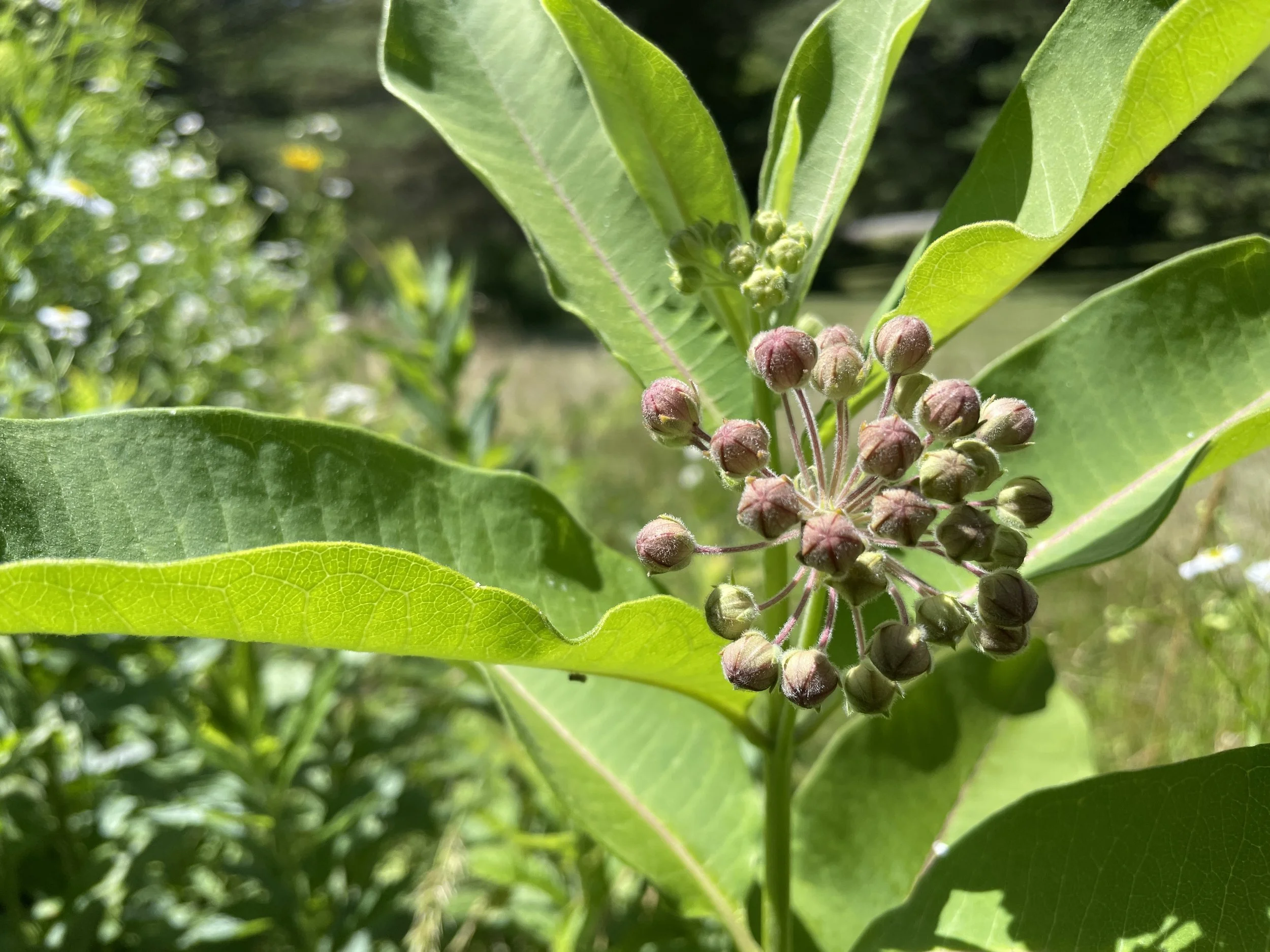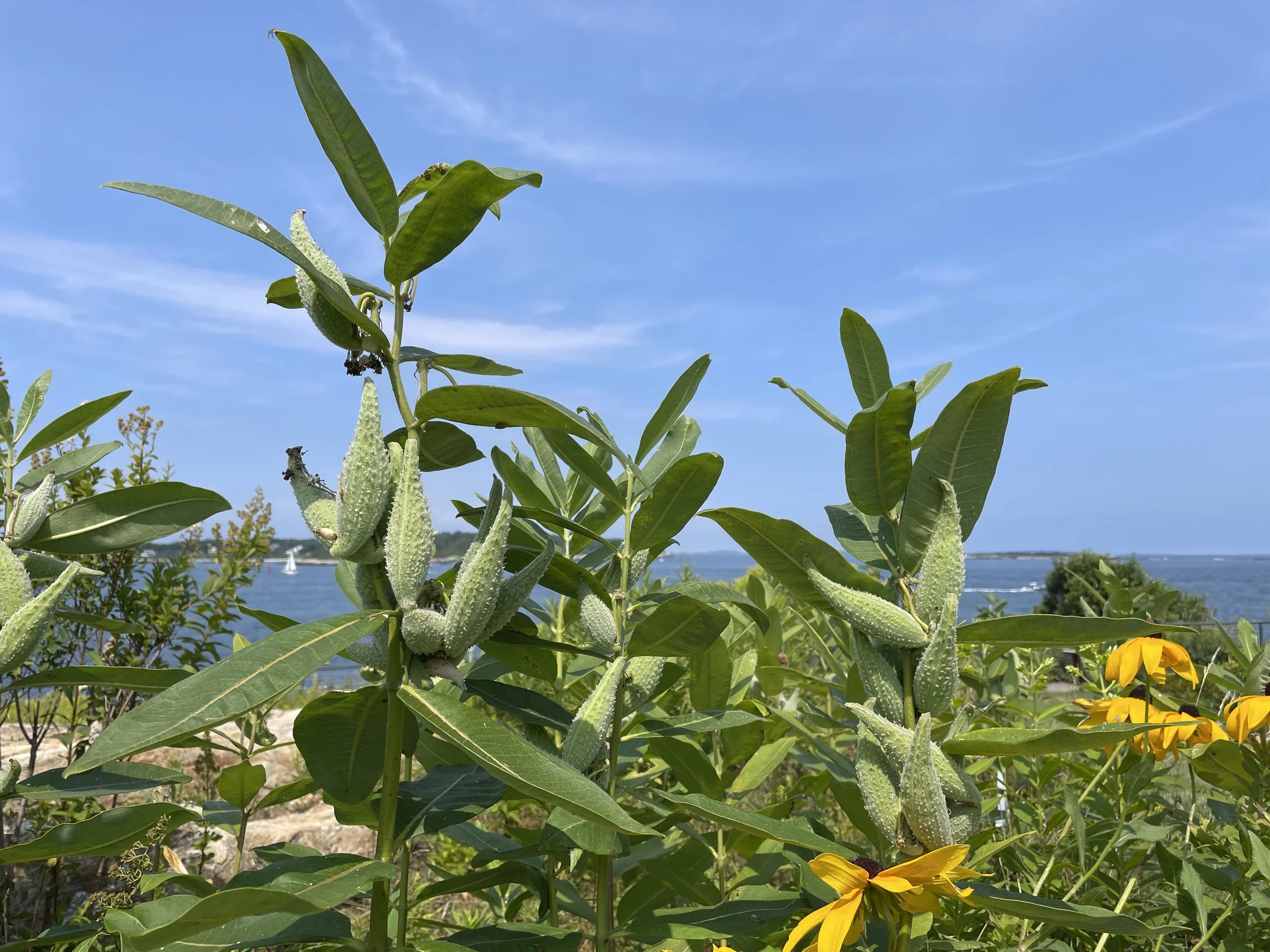
Common milkweed
Aslepias syriaca
-
About
Grows best in full to part sun and thrives in dry to medium soils, but can grow in most soil conditions. Grows to 2’ up to 4’ in height. The blooming period lasts about 1-1½ months from early to mid-summer. It is a colonizer of disturbed areas in both natural and developed habitats. Primarily spreads vegetatively, rather than by seed.
Mammalian herbivores don't eat this plant because of the bitterness of the leaves and their toxic properties. *Although, we have deer who visit the farm that will eat milkweed.*
-
Ecological importance
Milkweeds (Asclepias spp.) are the only food of the Monarch caterpillar. The flowers are very popular with many kinds of insects, especially long-tongued bees, wasps, flies, skippers, and butterflies, which seek nectar. Other insect visitors include short-tongued bees, various milkweed plant bugs, and moths, including Sphinx moths. In addition to the caterpillar of the Monarch Butterfly (Danaus plexippes), the caterpillars of a few moths feed on the foliage, including Enchaetes egle (Milkweed Tiger Moth), Cycnia inopinatus (Unexpected Cycnia), and Cycnia tenera (Delicate Cycnia). -Illinois Wildflowers
-
Why Courtney loves it
I love Common milkweed because it is one of the plants I have known since childhood and have continually been entrance by the complexity of the flower and the beauty of the dried seed pod cracked open - releasing it’s seeds in the wind.
It’s another plant that some find a nuisance, but I am always happy to have it wherever it pops up!

